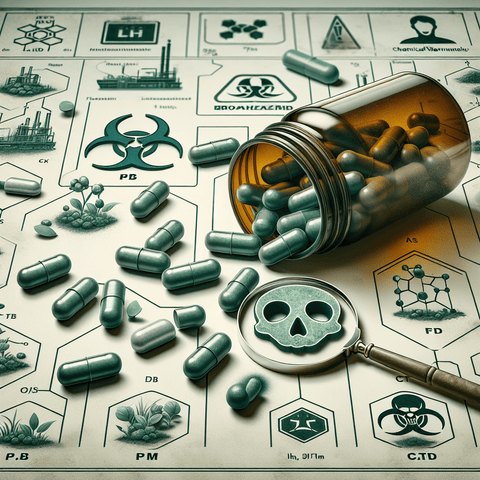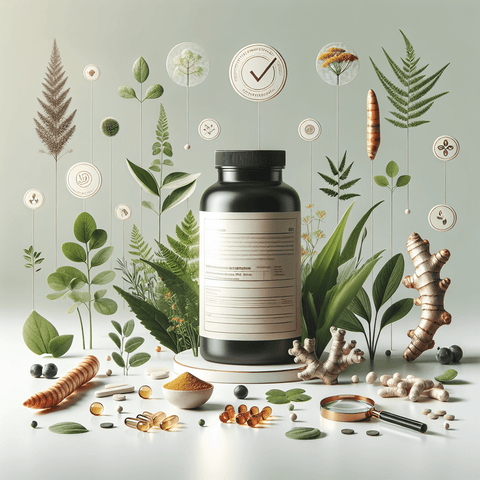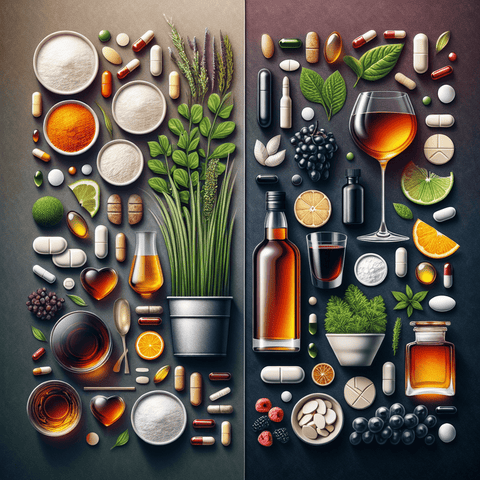Introduction
Nutritional supplements have sky-rocketed in popularity globally over the past few decades. From multivitamins and herbal extracts to protein powders and omega-3 capsules, consumers are increasingly turning to supplements to protect their health, fill dietary gaps, and support fitness and wellness goals. As awareness of functional foods and wellness products surges, so does the expectation for clean, safe, and transparently produced supplements.
With millions of people consuming supplements regularly, the integrity of these products is crucial. You’re expecting the capsule or powder you take daily to promote your health—not potentially harm it. That’s where safety concerns come into sharp focus, especially around heavy metals. Recent consumer reports and scientific studies have found traces of toxic metals like lead, arsenic, cadmium, and mercury in certain supplement products.
This revelation is understandably alarming. Heavy metals, even in trace amounts, can accumulate in the body and may lead to long-term adverse health outcomes. Whether from contaminated soils, low-quality raw materials, or lax quality control, their presence points to a deeper issue in supply chains and regulatory enforcement.
This comprehensive guide aims to break down the science, health implications, and consumer strategies surrounding heavy metals in dietary supplements. By the end, you'll be equipped with the knowledge you need to make informed, confident choices—selecting only products that take your safety as seriously as you do.
Understanding Heavy Metals in Supplements: What Every Consumer Should Know
To fully grasp why heavy metals in supplements are a concern, we first need to clarify what these substances are and how they potentially enter the products millions consume daily. Heavy metals, such as lead, arsenic, mercury, and cadmium, are naturally occurring elements with high atomic weights. While trace amounts of certain minerals are essential for human health—like iron, zinc, copper, and selenium—others are toxic even in small doses and considered hazardous.
When talking about heavy metals in supplements, the ones to be most concerned about are those classified as toxic: lead, mercury, arsenic, and cadmium. These do not serve any beneficial function in the human body and can build up in tissues over time when consumed consistently, even at low levels. Unlike vitamins and essential minerals, your body does not need them and cannot efficiently expel them, especially when exposure is chronic.
But how do these heavy metals wind up in your supplements in the first place?
- Contaminated Raw Materials: Many supplements, especially herbal or plant-derived ones, are grown in soil. If that soil contains heavy metals due to industrial pollution or natural mineral deposits, the plants can absorb them. These contaminants are then transferred into the final product.
- Manufacturing Practices: In regions with less stringent manufacturing regulations, factories may lack proper testing and quality assurance protocols. Equipment can be contaminated, or suppliers may not trace their ingredients' origins or purity effectively.
- Processing and Packaging: Metallic contaminants can sometimes enter supplements during grinding, extraction, or even packaging due to subpar materials or improper handling.
The health risks linked to heavy metals are cumulative. Prolonged exposure may lead to:
- Lead: Linked to neurological and developmental disorders in children and cognitive decline in adults.
- Mercury: Can impair the nervous system, particularly dangerous for unborn children during pregnancy.
- Cadmium: Accumulates in the kidneys and can contribute to bone damage.
- Arsenic: Known to influence skin, lung, and liver function and is classified as a carcinogen.
One of the most discussed issues is distinguishing between necessary trace minerals (like magnesium and iron) and toxic metals. Although both are metals and naturally found in the earth's crust, only designated essential minerals have recognized biochemical roles. The crucial difference lies in their necessity, toxicity threshold, and metabolic utility, with many toxic metals offering no known benefit and significant risk.
Recent research has brought significant attention to this matter. In 2021, Consumer Reports shared findings that certain protein powders and herbal supplements sold in the U.S. market contained potentially harmful levels of lead and other contaminants. Similarly, several scientific journal articles over the past five years have evaluated supplements across various international markets and found inconsistent levels of compliance with safety standards.
The main takeaway? Being informed is your strongest defense. While the industry continues to grow, not all supplement companies uphold the same safety and sourcing standards. As consumers, understanding how contaminants can enter products—and their implications for health—empowers us to demand better and choose wisely.
Toxic Metals in Vitamins: Hidden Dangers and Health Risks
While the presence of heavy metals in plant-based supplements is perhaps easier to understand due to soil absorption, they have also been detected in many types of vitamins—including children's multivitamins, herbal blends, and protein powders. This raises immediate concerns because consistent ingestion, even in seemingly insignificant doses, can lead to chronic health effects over time.
Why Are Toxic Metals Dangerous Even in Tiny Quantities?
Unlike some toxins that require large amounts to cause harm, heavy metals pose long-term dangers precisely because they accumulate incrementally. The body isn’t very effective at eliminating them, especially in vulnerable individuals. Over time, this leads to bioaccumulation and disruption of multiple organ systems.
Here are some of the physiological impacts associated with specific heavy metals:
- Lead: This well-known neurotoxin interferes with cognitive function and development, especially in young children. The CDC states that no level of lead exposure is truly “safe.” Chronic exposure can also cause reproductive issues, high blood pressure, and anemia in adults.
- Cadmium: Often found in green leafy plant sources and rice-derived ingredients, cadmium may harm kidney function and has been linked to bone demineralization and an increased risk of certain cancers.
- Mercury: Present in some fish oil supplements from poorly sourced marine environments, this toxin affects memory, motor skills, and behavior. Fetuses and young children are the most susceptible to its adverse effects.
- Arsenic: Often found in rice-based proteins and sea-based supplements such as kelp, arsenic is particularly dangerous in its inorganic form and is linked with increased risk of cancer and cardiovascular effects.
Vulnerable Populations
Children, pregnant women, elderly individuals, and those with chronic illness are most at risk from prolonged exposure to toxic metals. Children's developing bodies absorb heavy metals more easily than adults, magnifying their harmful effects. Likewise, pregnant women exposed to mercury or lead could pass these metals to their unborn children, affecting fetal development.
Supplements of High Concern
Several supplement types are more prone to contamination:
- Protein Powders: Especially plant-based powders derived from rice, soy, or hemp. These raw materials can absorb metals from polluted soil or water.
- Herbal Supplements: Sourced internationally, herbs such as turmeric, ashwagandha, and ginseng may be grown in regions with minimal environmental regulation.
- Multivitamins for Children: Unfortunately, some products marketed for children have tested positive for trace heavy metals, putting the most vulnerable at risk.
Given these risks, checking the source and purity of supplements is vital. Consumers can opt for trusted products from certified collections like vitamin C immunity boosters or curated vitamin D sources known for their manufacturing transparency and safety standards.
By being informed about which toxic metals pose real health risks—and which supplements are more likely to be affected—you can make better, safer choices for yourself and your family.
Supplement Contamination Risks: From Soil to Shelf
Contamination with toxic heavy metals can be traced through virtually every stage of supplement production. From the environment where ingredients are grown to the manufacturing plant and final packaging, there are numerous opportunities for safety lapses. Let’s explore how these risks arise and what you, as a consumer, should know to protect yourself.
1. Environmental Exposure and Soil Pollution
One of the most significant routes of contamination stems from the soil in which plant-based supplements are cultivated. Industrial regions, especially in countries with relaxed environmental laws, often have soil laden with pollutants. Plants like rice and leafy herbs are particularly efficient at absorbing metals from the soil.
For instance, rice grown in arsenic-contaminated paddies is a common source of rice protein powder—a popular vegan supplement. Similarly, medicinal herbs like ashwagandha and ginseng have been found to accumulate heavy metals based on their growing conditions. This underscores the importance of geographic location and sourcing transparency in the raw materials used.
2. Quality of Raw Materials
High-quality supplements start with high-quality ingredients. Unfortunately, some companies cut costs by sourcing cheaper ingredients that may not have undergone proper testing for contaminants. Suppliers may not consistently audit or validate their sources, which means you could be ingesting harmful substances unknowingly.
3. Manufacturing Practices
Even when the raw materials are clean, poor manufacturing cleanliness and process controls can introduce contaminants. Facilities that don’t adhere to Current Good Manufacturing Practices (cGMPs) may use outdated or improperly maintained equipment, leading to cross-contamination. Manufacturing equipment made of stainless steel, if not maintained properly, can also leach small amounts of metals into products.
4. Packaging and Transport
Packaging materials can play a role, too. Some cheaper plastic containers may contain residues that interact with supplement contents, especially oil-based products. Moreover, long shipping routes with fluctuating temperatures and humidity levels can further degrade packaging integrity, raising contamination risks.
5. The International Factor
More than 80% of raw materials used in supplements come from overseas. While globalization expands supply, it also introduces inconsistencies in regulatory oversight. The U.S. FDA or EU regulators do not monitor every international supplier, leaving gaps where harmful substances can sneak in, especially if vendors don’t voluntarily comply with high testing standards.
Examples of Failures
- In 2018, a popular herbal supplement brand was required to recall several batches due to lead contamination.
- Another case involved protein powders containing cadmium levels above California Proposition 65 limits.
- In Europe, the EFSA has issued warnings on seaweed supplements found to exceed legal mercury limits.
Trusted brands minimize these risks by sourcing responsibly and implementing rigorous internal testing. Look for collections like magnesium supplements or omega-3 fatty acids from reputable suppliers that disclose their quality assurance practices.
Ultimately, contamination risks are present at every point. The right supplement companies will take proactive measures to prevent them, but consumers must demand transparency and proof of purity.



